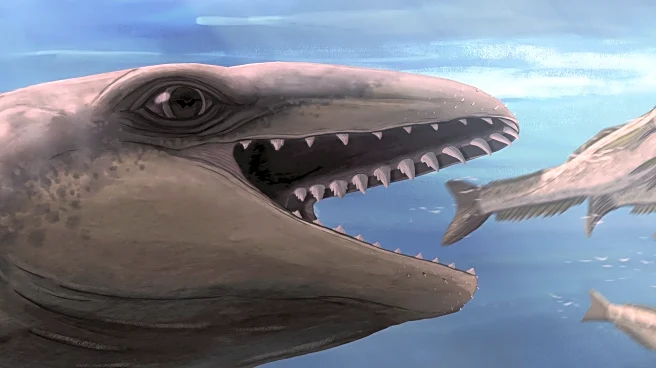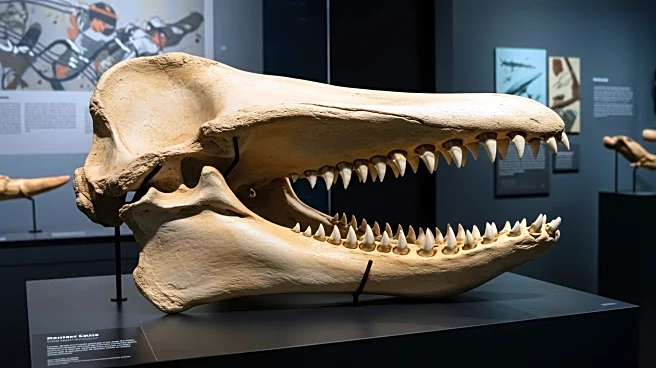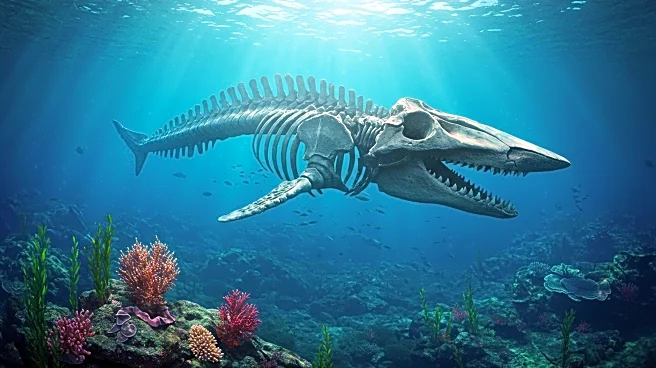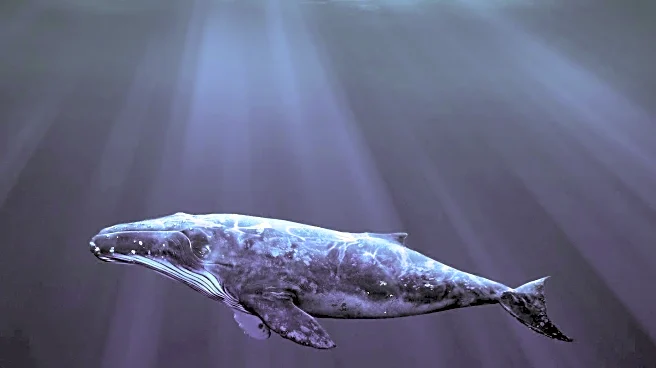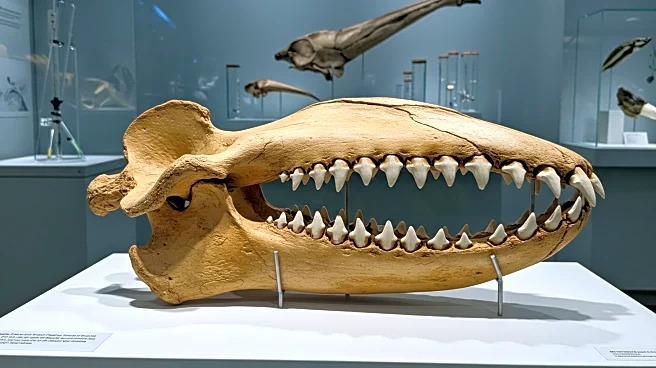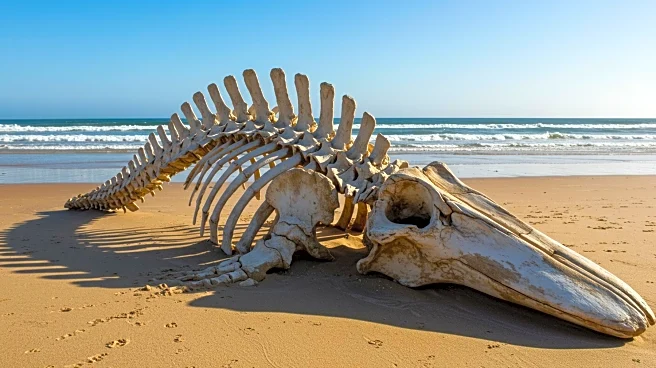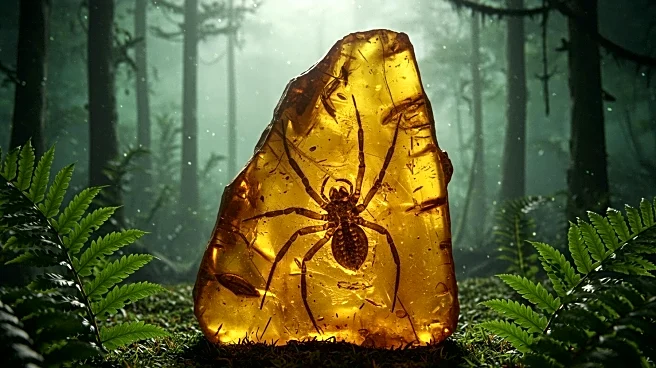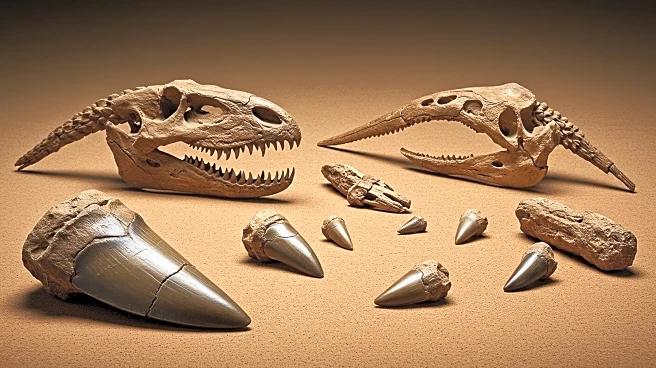What is the story about?
What's Happening?
Paleontologists have identified a new whale species, Janjucetus dullardi, from a 25-million-year-old fossil found on an Australian beach. The discovery was made by Ross Dullard, an amateur fossil hunter, who found the partial skull on Jan Juc Beach in Victoria. The species, characterized by its razor teeth and bulging eyes, provides insights into the evolution of whales. Janjucetus dullardi belonged to a group known as mammalodontids, early whales that lived during the Oligocene Epoch. These tiny predators, measuring up to 3 meters in length, were an early branch leading to today's baleen whales. The fossil includes ear bones and teeth, offering valuable information about the creature's diet and behavior.
Why It's Important?
The discovery of Janjucetus dullardi is significant for understanding the evolutionary history of whales. It provides clues about how early cetaceans adapted to their environments and evolved into the diverse species seen today. The fossil's preservation allows researchers to study the anatomical features of ancient whales, contributing to knowledge about their feeding habits and ecological roles. Insights gained from such discoveries can inform current studies on how marine life might respond to climate change. The find also highlights the importance of fossil-rich areas like Jan Juc Beach in uncovering prehistoric life and advancing scientific knowledge.
What's Next?
Researchers will likely continue to study the Janjucetus dullardi fossil to uncover more details about its anatomy and evolutionary significance. Further exploration of Jan Juc Beach may lead to additional discoveries that enhance understanding of early whale species. The findings could prompt new research into the adaptation mechanisms of ancient cetaceans, providing a broader perspective on marine evolution. Public interest in paleontology may increase, encouraging more amateur fossil hunters to contribute to scientific discoveries.
AI Generated Content
Do you find this article useful?


